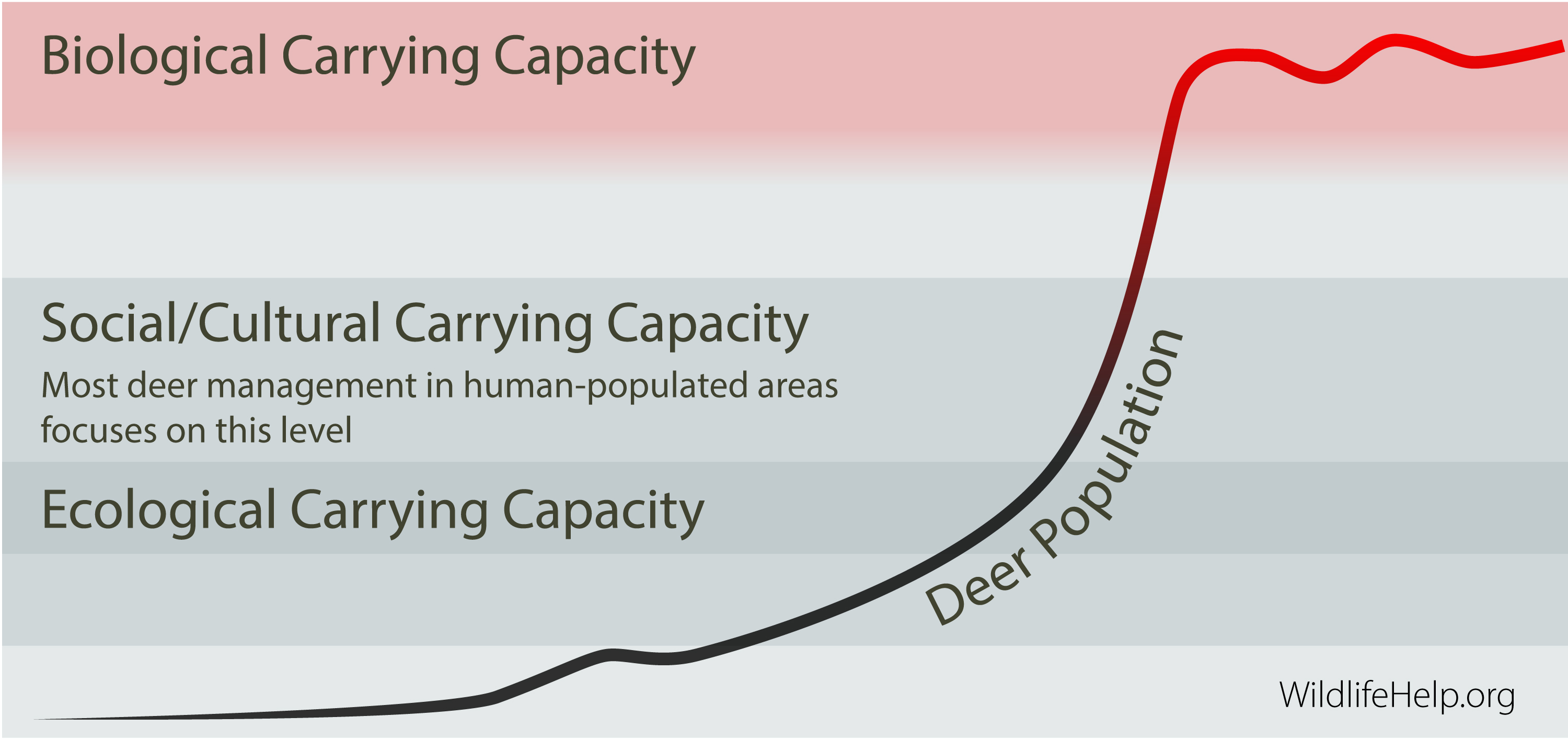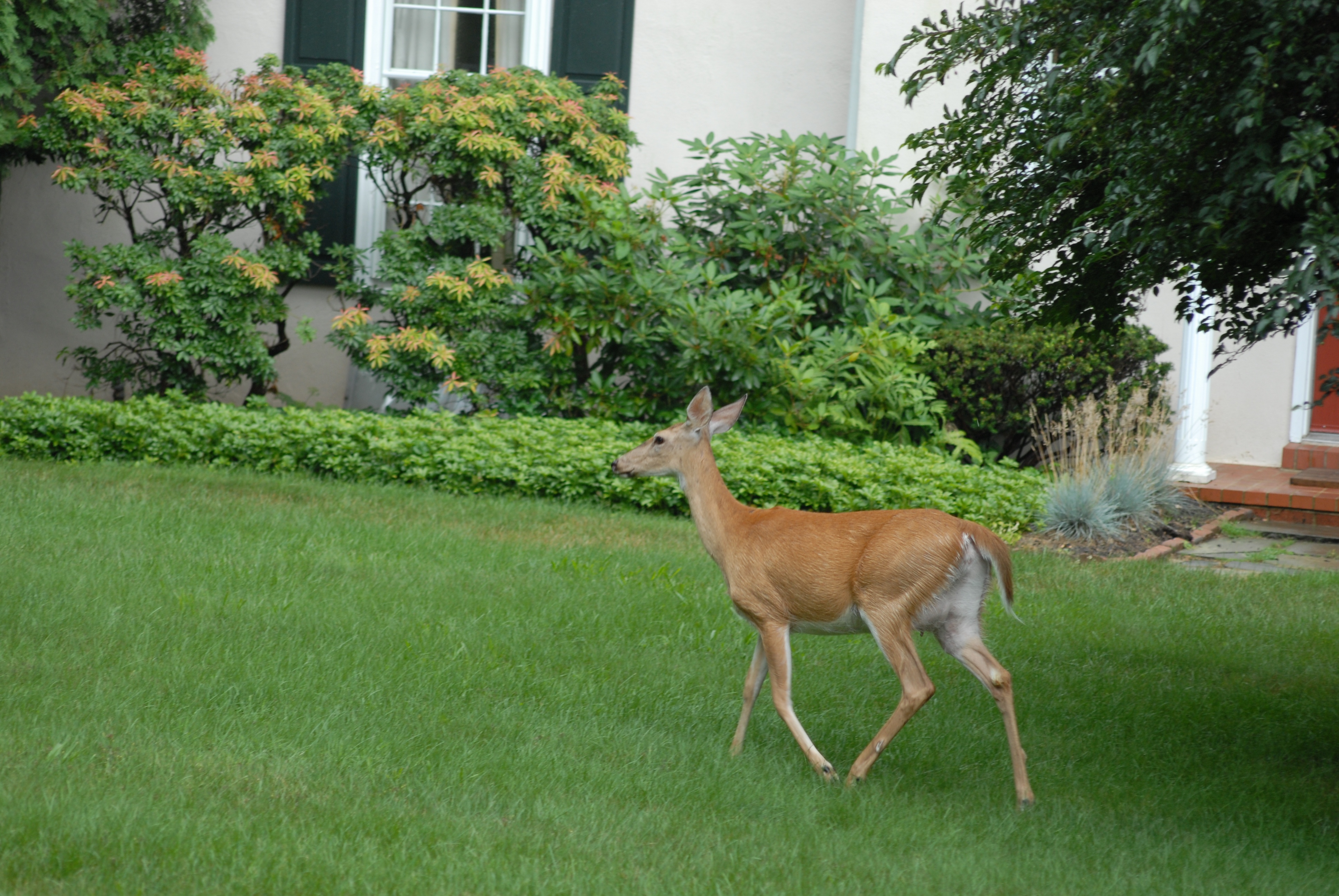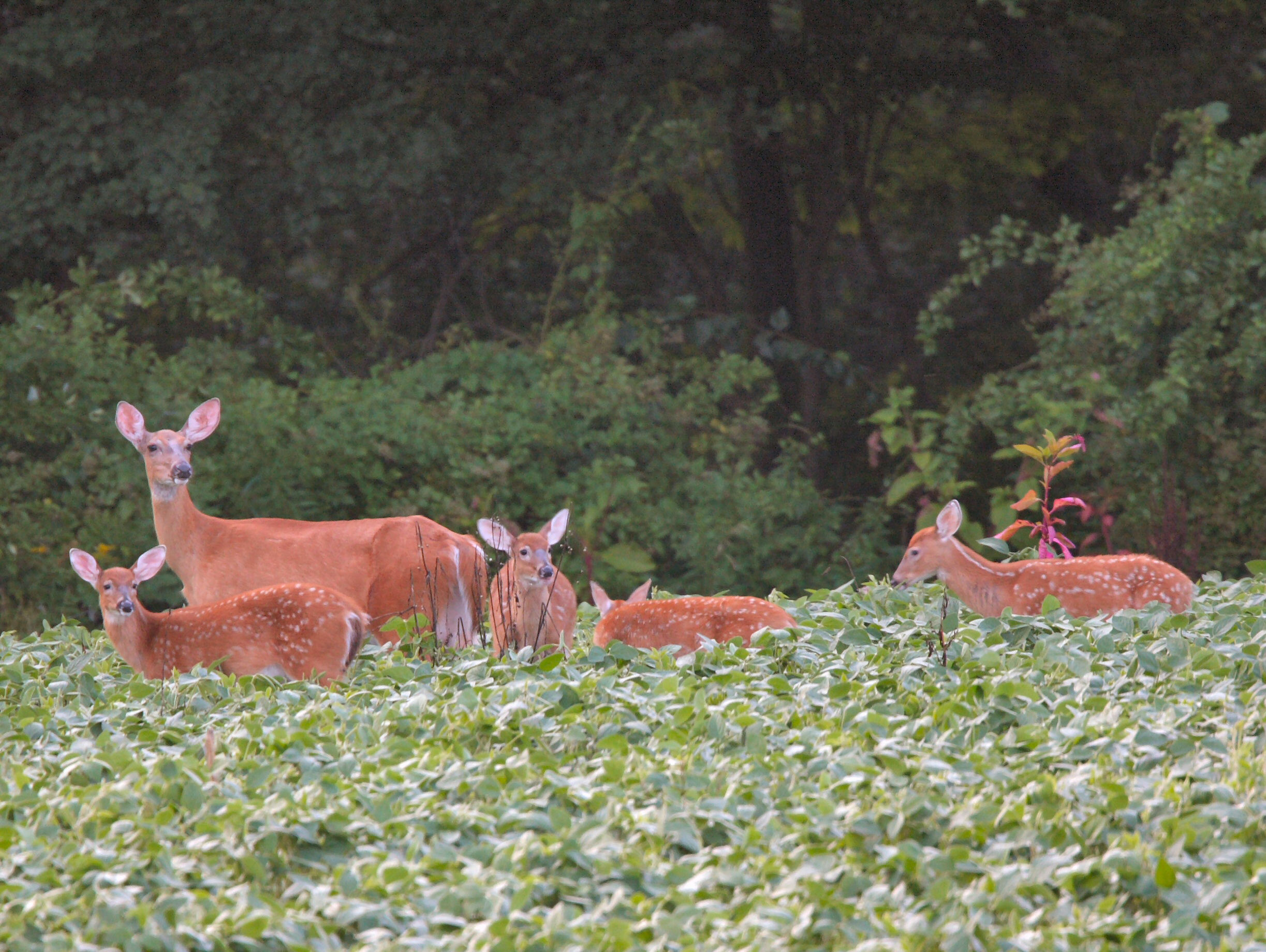White-tailed deer
White-tailed deer inhabit virtually every conceivable American landscape east of the Rockies, including major cities. Deer are active throughout the year. Most adults roam an area of less than one square mile. Deer eat the leaves, stems, and buds of woody plants throughout the year. Fruits and nuts (especially acorns), garden vegetables, flowers, and agricultural crops are important seasonally.
Fawns are born in late May or June. For the first month, fawns lie still and hide much of the time, and may appear to have been abandoned. The mother forages relatively nearby and periodically returns throughout the day to nurse. Within a month, the fawns are strong and agile enough to travel and forage with their mothers.
Deer are very tolerant of people and will bed and give birth in wooded edges, grassy areas, and fields close to homes. Deer movements and feeding activities are the chief factors in nuisance and damage situations. Deer can cause significant damage to ornamental trees, shrubs, flowers, vegetables, and native plants. Deer-vehicle collisions are a threat to human safety and property, especially during the fall mating season. Deer also have been implicated in the spread of ticks carrying Lyme disease.
White-tailed deer carrying capacity

Deer population carrying capacity
When managing deer in human-populated areas, wildlife managers consider the "carrying capacity" of an area in three contexts: biological, ecological, and social/cultural.
Solutions for white-tailed deer problems
Laws and regulations to be aware of
Regulations for Connecticut
|
|||
While we attempt to provide guidance about state and federal regulations pertaining to specific species and control techniques, we do not provide information about local jurisdictions (city, town, county, etc.) where regulations may be more restrictive, especially as it applies to discharge of firearms, transport of animals or use of trapping equipment. Contact your local city or county government to inquire further. No guarantee is made that information (or lack of information) associated with a species or control technique is completely accurate or current. You should become familiar with federal, state and local laws before beginning any wildlife control activities. |






